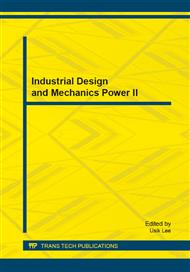p.281
p.286
p.290
p.296
p.301
p.306
p.313
p.321
p.325
Network Analysis and Impedance Matching Methods for Wireless Power Transfer via Coupled Magnetic Resonances
Abstract:
Wireless power transfer (WPT) via coupled magnetic resonances has received much attention owing to its high power transmission efficiency at mid-range distance in recent years. In this paper, a novel network method is used to analyze the WPT system. A two-port network model of the system is built and the ABCD parameters of the model are innovatively used to characterize the system. Then the power transmission efficiency is analyzed at different transmission distance. To improve the power transmission efficiency, an impedance matching method is proposed based on the network analysis of the system. In the end, its feasibility is testified by a case study. The results demonstrate that the maximum power transmission efficiency can be achieved by using the impedance matching method proposed in this paper.
Info:
Periodical:
Pages:
301-305
Citation:
Online since:
October 2013
Authors:
Price:
Сopyright:
© 2013 Trans Tech Publications Ltd. All Rights Reserved
Share:
Citation:


